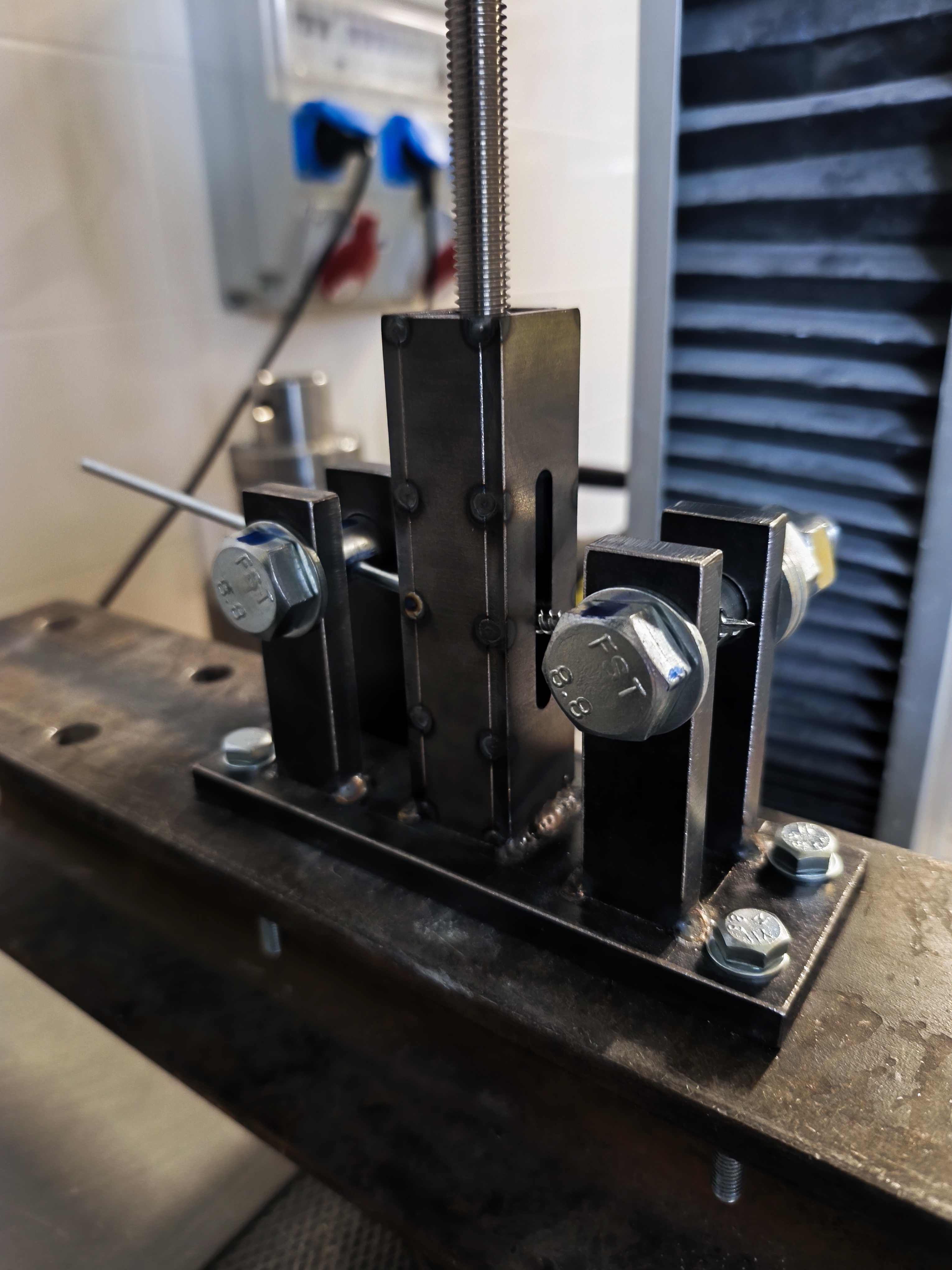

The Structural Engineering research team works in cooperation with HPM TEC to prepare the use of wood screws RAPI-TEC© from
its production in seismic areas. Special devices were designed in the CTU UCEEB laboratories in Bustehrad to perform unconventional
mechanical tests.
We performed the tests in accordance with Appendix E of the ČSN EN 14592 standard, Timber structures – Pin-type fasteners
– Requirements. For these tests, we designed a special steel device that allows for cyclic loading and meets the requirements
of the standard. Since we needed to test screws of multiple diameters, we had to design a unique device for each diameter.
The test itself simulates the stress on a screw during an earthquake and is performed by bending the screw in one plane,
first to one side and then to the other. This cycle is repeated three times, and then the sample is bent until it breaks.
When the screw is bent, one side of the shank is subjected to tensile stress and the other to compressive stress. When bending
in the other direction, the type of stress is reversed. Based on the angle at which the screw is bent, the screw is classified
into ductility classes S1 to S3. The greater the angle, the more difficult it is to perform the test without breaking the
screw and the higher the resulting ductility class.